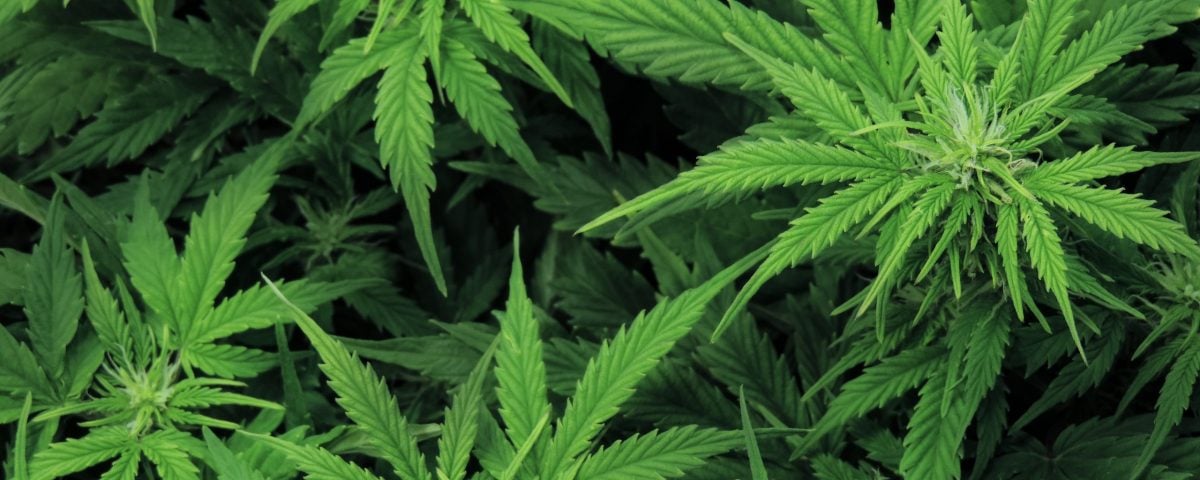There has been a recent push by the public to legalize recreational marijuana, but just how safe is this drug?
Smoking cigarettes was popular in the United States for many years, but then the truth about their dangers came out. Reports of lung cancer caused by cigarettes and tobacco skyrocketed. Many people quit, but for others, it was too late. By that point, they were already hooked, and the tobacco had already caused a fair amount of damage. Now, with recreational marijuana rising in popularity, similar questions arise, including, “Is marijuana safer than tobacco?” Treatment professionals at our Banyan Illinois rehabs found some interesting facts when comparing tobacco and weed.
What Is Nicotine?
To properly compare nicotine and cannabis, you must first understand what nicotine is and how it works. Nicotine is a central nervous system (CNS) stimulant that speeds up nerve activity in the brain and spinal cord. It is the main psychoactive ingredient in tobacco products like cigars, cigarettes, pipe tobacco, and wet and dry snuff. Even E-cigarettes that do not contain tobacco may contain nicotine.
While people who are not accustomed to smoking cigarettes or ingesting nicotine may experience uncomfortable side effects like dizziness, headache, and nausea, long-time users may experience other side effects like:
- Mild stimulation
- Increased heart rate
- Coughing
- Increased concentration
- Relaxation
- Reduce appetite
Nicotine vs. THC
Nicotine’s mechanism of action is like those of other CNS stimulants, which work by activating the levels of neurotransmitters like dopamine in the brain. These drugs then inhibit the reuptake of these chemicals, flooding the brain with dopamine and serotonin. As a result, the body undergoes a euphoric high. This is what makes nicotine so addictive.
In the case of THC, it stimulates neurons in the brain’s reward system to release elevated levels of dopamine, producing its euphoric and calming effects.
Marijuana vs. Cigarettes & Tobacco Products
While cigarettes tend to be the most well-known, there are several different types of tobacco products, including cigars, smokeless tobacco, dissolvables, and most electronic cigarettes. Although containing tobacco in several different forms and amounts, all these products can be dangerous to a person’s health, especially with continued use. E-cigarettes have risen in popularity among the youth in recent years. While they are marketed as a safer alternative to traditional cigarettes, the long-term effects of vaping are still concerning.
Is Tobacco a Drug?
In a way, yes. The nicotine in tobacco is considered a central nervous system stimulant, making tobacco products that contain nicotine addictive. Tobacco can lead to serious health consequences with regular ingestion. It is responsible for 5 million deaths a year and is the leading cause of premature death around the world. The World Health Organization suggests that tobacco use is linked to cardiovascular problems, respiratory disease, and over 20 different subtypes of cancer. Even repeated secondhand smoke exposure can lead to serious health complications. Along with being dangerous to your health, tobacco products are highly addictive. Many people struggle to quit even when they are faced with these health problems. Some research also suggests that tobacco products are like gateway drugs that could lead to harder drug abuse, which usually requires formal substance abuse treatment to stop.
With a quick glance, many people comparing marijuana vs. tobacco will be quick to assume that marijuana is safer than tobacco. Medicinal marijuana is currently used to treat two rare forms of epilepsy, and some researchers believe its use could extend to the treatment of various other ailments. While promising, the FDA has not yet approved the marijuana plant because not enough studies have been done to determine if the benefits of this medicine outweigh the risks. This sparks a new quebstion: is weed worse than cigarettes?
Nicotine and Weed: Which Is Worse?
When looking at weed vs. tobacco, you will find that research on the short and long-term effects of marijuana is still limited. Some studies suggest that regular use may negatively impact brain development. Its use has also been linked to other harmful mental and physical health effects, such as an increased risk of heart attack, respiratory problems, and severe nausea.5 Although the health implications of tobacco vs. weed seem far less concerning, more research could reveal other potential health problems that may be more serious.
If comparing weed vs. cigarettes, it is also important to look at their potential for addiction. Because of nicotine, tobacco products tend to be highly addictive. To many people’s surprise, marijuana is also addictive. Some research suggests that as many as 30% of marijuana users have some degree of marijuana use disorder. There is also evidence to suggest that both marijuana and tobacco are gateway drugs. What starts as occasionally getting high could eventually land someone in an inpatient or outpatient program for addiction. These little-known facts about marijuana make it potentially more dangerous than many people realize.
How Does Marijuana Affect the Lungs Compared to Tobacco?
Because tobacco and marijuana have different chemical compositions and methods of intake, they can have different effects on the lungs. When it comes to marijuana, smoke inhalation is the main cause of concern. Many of the same dangerous substances, including tar and carcinogens, that are present in tobacco smoke are also present in cannabis smoke. Nonetheless, studies indicate that marijuana smokers may not injure their lungs as much as tobacco smokers, in part because they often inhale less deeply and smoke fewer cigarettes overall. However, there are still dangers associated with marijuana smoking for the health of the lungs, including the possibility of developing chronic bronchitis or airway inflammation.
Nonetheless, it is commonly known that smoking has a substantial negative impact on lung-related health issues. The highly addictive ingredient in tobacco, nicotine, causes blood vessels to constrict and blood pressure to rise, reducing the amount of oxygen that enters the lungs. In addition to other illnesses, including emphysema and chronic obstructive pulmonary disease (COPD), long-term tobacco smoking can lead to lung cancer. Because tobacco smoke contains hundreds of dangerous compounds, many of which are proven carcinogens, lung cancer is also more common in smokers. In the end, it's important to stress that although marijuana may not be as bad for lung health as tobacco is, both can have negative effects on the respiratory system.
Does Weed Have Tobacco In It?
No, weed does not include tobacco. These two different plants each have special qualities of their own. THC (tetrahydrocannabinol) and CBD (cannabidiol), among other psychotropic substances, are found in the Cannabis plant, which is the source of marijuana. When ingested, marijuana can have a variety of effects, such as relaxation, euphoria, and changed perception. Nonetheless, nicotine, an addictive stimulant, is found in tobacco, which is derived from the Nicotiana plant. Usually, tobacco is utilized in cigarettes or in other products like snuff or chewing tobacco. Some people choose to combine marijuana and tobacco, but it's vital to remember that this is not how they naturally exist.
People who combine tobacco and weed produce what is referred to or described as a "spliff" or "joint with tobacco." This technique is frequently used for a variety of purposes, such as maximizing the benefits of marijuana or wanting to feel the energizing qualities of nicotine in addition to THC's effects. Combining weed with tobacco, however, can greatly increase the possible dangers connected to smoking. The main risk comes from the many dangerous compounds included in tobacco smoke, known as carcinogens—substances that are known to cause cancer. These dangerous substances can exacerbate the harm done to the respiratory system when smoked with marijuana.
Another way to consume marijuana is with blunts, which entail encasing the plant in a cigar-shaped wrapper made mostly of tobacco leaves. This method creates a single rolled product that contains both tobacco and marijuana. Because of their ease of use and the slow-burning nature of the cigar wrapper, blunts are favored by some cannabis users over other smoking methods, but it's vital to understand that they carry the same health hazards. Actually, because the cigar wrapper usually contains a greater amount of tobacco, blunts may even increase these hazards. This implies that those who opt to use blunts to smoke marijuana are subjecting themselves to greater concentrations of the dangerous compounds present in cigarette smoke.
Unless using medicinal marijuana for purposes prescribed by your doctor, using cannabis and nicotine could be hazardous to your health. At our Chicago addiction treatment center, we help people overcome their substance abuse problems before they escalate.
If you or a loved one is looking for one of the best Naperville rehabs in the state, call Banyan Treatment Centers Chicago today at 888-280-4763 to learn more.
Sources:
- NCBI - Tobacco Addiction: Diagnosis and Treatment
- WHO - Tobacco
- NIH - Why Nicotine is a Gateway Drug
- WebMD - Medical Marijuana FAQ
- NIH - Marijuana DrugFacts
- NIH - Is marijuana addictive?
- NIH - Is marijuana a gateway drug?









